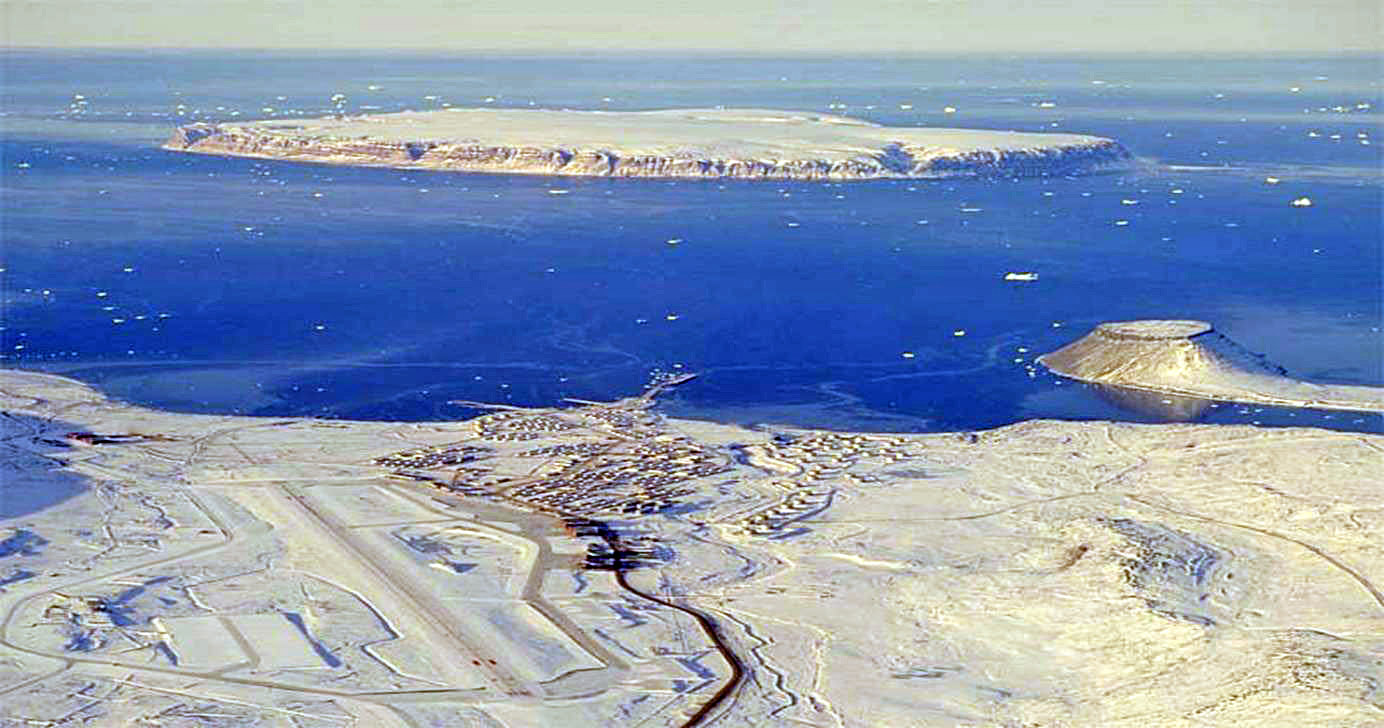Special to WorldTribune.com
New York — It’s the summer silly season in the media; see what purports to be serious news from the eternal campaigning for the Iowa Caucuses, to bizarre Washington antics.
And then, there’s the wildest of all: Donald Trump wants to buy Greenland!
Given that most of the country can’t even find the arctic island, nor has even the remotest idea that the purchase plan was actually tried by President Harry Truman just after WWII, the concept that an American president would want to buy an ice bound island seems the grist of folly or a gimmick.

Former Danish Prime Minister Lars Lokke Rasmussen said: “It has to be an April Fool’s joke … totally out of season!” It would appear so. But wait!
When the USA purchased Alaska from Imperial Russia in 1867, the land deal was derided as Seward’s Folly, to shame the Secretary of State who pursued what was viewed at the time as a stupid and reckless gamble squandering $7 million for 578,000 worthless square miles of ice, tundra and mountains.
Related: Pompeo alerts Arctic Council to ‘subversion’ threats from China, Russia, May 7, 2019
Since Greenland belongs to the Kingdom of Denmark, let’s recall that in 1917, as America entered WWI, Woodrow Wilson’s administration bought the Danish Virgin Islands for a princely sum of $25 million. The islands are now known as the U.S. Virgin Islands.
And just to round out the argument, let’s not forget Mr. Jefferson’s 1803 Louisiana Purchase of 800,000 square miles of French territory. Washington made the deal with Napoleon for $15 million.
Thus the concept is not totally as wacky as it may seem.
Greenland, the world’s largest island, falls under Danish sovereignty. Whether the Kingdom of Denmark, a wealthy member of the European Union and NATO would care to do a Deal with The Donald is another matter and highly unlikely.
This writer has actually visited Greenland twice back in the 1980’s. On a hot July day I recall a contact from U.S. Air Force public affairs offering, “It’s brutally hot in New York, Want to go to Greenland?” Well, happily I did. As part of the NATO treaty the U.S. maintains a series of facilities on the island. We stayed at Sondersrtom Fjord, (base since closed) a barren piece of coastal land down stream from a massive glacier. Summer temperatures can be warm and its nearly always light outside. Just inland from the base lies the vast Ice Cap of lore and legend.
Sondrestrom and its adjoining Airport, a small Danish outpost, is linked to Copenhagen but has its own economy with fishing and mining. Significantly Greenland has been identified as a resource rich repository of minerals including rare earth. Chinese tourists and business interests have recently been poking about looking for prospecting deals.
On another occasion I accompanied the New York Air National Guard 109th Airlift Wing out of Schenectady which was the sole unit flying lumbering C-130’s Hercules with skis to Greenland. Very eventful but that’s another story. Bright sunny days on the icecap are beautiful until you try a ski takeoff in mushy warm snow!
Then there’ s Thule Air base 750 miles north of the Arctic circle which is part of the North American Aerospace Defense Command (NORAD), a radar network shared by the USA and Canada. As a crucial part of the Ballistic Missile Early Warning System, Thule has reinvented its mission as a part the U.S. Space Command.
Importantly Greenland forms the northern tier of the Greenland, Iceland, UK Gap in which Soviet submarines heading towards North America were monitored. The GIUK chokepoint was crucial during the Cold War and hopefully Russian subs transiting the region are still monitored.
Indeed the region’s geopolitical significance has actually grown given pack ice melts, and the vast Arctic, including Greenland, forms a growing focus of Russian and Chinese strategic and economic interests. Speaking in Finland in May, Secretary of State Mike Pompeo asserted, the region’s “centerpiece,” the Arctic Ocean, “is rapidly taking on new strategic significance.”
He added the Arctic, “is at the forefront of opportunity and abundance. It houses 13 percent of the world’s undiscovered oil, 30 percent of its undiscovered gas, and an abundance of uranium, and rare earth minerals.”
Why is this island called Greenland when it’s ice? Eric the Red and Norse settlers arrived in 982 AD. Back then there were green meadows, farms and vineyards until the Little Ice Age turned
the region increasingly cold and uninhabitable. The Norse population disappeared around 1500.
Greenland comprises 836,000 sq. miles and has 57,000 people, mostly Inuit and European Danish. Since 1979 Denmark granted home rule to the island, and in 2008 Greenlanders gained self-government. The Danish government controls foreign affairs and defense policy. Nonetheless Denmark pours huge financial subsidies into the autonomous region prompting critics to complain of the cost.
News of the Trump proposal, it’s actually true according to Economic Advisor Larry Kudlow, was greeted by the Danish lawmakers on both left and right as “crazy, awful, insecure, absurd.” Indeed, it’s hardly a place for a golf resort.
“Greenland is open for business” tweeted the local government but, “is not for sale!”
John J. Metzler is a United Nations correspondent covering diplomatic and defense issues. He is the author of Divided Dynamism the Diplomacy of Separated Nations: Germany, Korea, China (2014). [See pre-2011 Archives]

 By
By